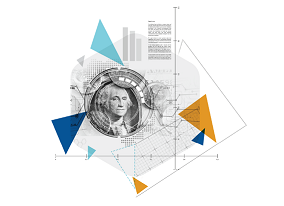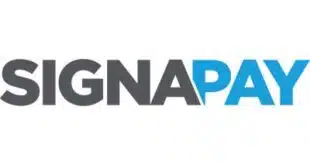By moving to real-time payments, US banks will enhance their service as well as generate cost efficiencies and higher revenues, writes Darryl Proctor
When the subject of US banking comes up, Wall Street, innovative multi-billion-dollar deals, and cutting-edge technology might come to mind. The reality, however, is a bit different.
The words “cutting-edge” and “technology” are rarely aligned to the use of paper. Although the average daily volume of commercial checks collected in the US dropped 66% (from 67 million in 2000 to 22.9 million in 2014) according to Fed data, paper checks are still popular method for regular higher value payments such as rent and utilities, despite them taking take three days to clear. This isn’t just a matter of customer choice. Real-time bank payments simply don’t exist.
Real-time payments (known as Faster Payments) were introduced in the UK, back in 2008. The benefits have been huge. In 2016 alone, the Faster Payments services payment volume growth was 19.8%. This success has, in part led to check payments rapidly decreasing. In September last year, Mintel research reveals that checks have been used by less than one third (31%) of the British public in the three months previously, down from 40% who used them to make a payment in 2015.
Faster Payments is clearly a service valued by their customers – and one that US customers are after when they use instant payment services such as PayPal and ApplePay. It is no surprise then that the Federal Reserve has begun a review of real time payments, setting a target for their introduction by 2020, US banks are at last starting to look at their options.
For big banks there are two – a bolt-on solution, or digital transformation with real-time payments embedded. While bolt-on might be seen as a quick fix, it’s only a short term solution. It adds complexity to IT systems, with the accompanying additional risk of IT failure and fraud.
The alternative is end-to-end digital banking. Banks will benefit not only from being able to provide real-time payments, but also up-to-the minute data analytics to improve customer services, drive revenue growth and cut costs. The flexibility of digital systems also means banks will be able to respond faster to market changes, develop new products more quickly, and run better, tighter, anti-fraud systems.
For smaller banks, the way ahead is to become indirect participants in real-time banking by outsourcing the service to a partner with a suitable payment facility. Some internal adjustments will be required, including upgrading technology and retraining staff so that they can send batches of payments two or three times a day – perhaps more often – instead of one batch overnight.
The benefits of keeping up with the global market are manifest. Banks in other markets where real-time payments are present have cut costs, improved services and increased revenues. Those with end-to-end digital banking platforms have also seen increased return on investment and lower total cost of ownership. Meanwhile, their customers have enjoyed improved liquidity and powerful analytics that help them make better decisions.
With the Fed on the case and tech giants such as Apple, Google and PayPal moving on to banks’ turf with payment systems of their own, banks can no longer ignore the issue. The reality of real-time payments is here.
Darryl Proctor is product director, payments and universal banking at Temenos







